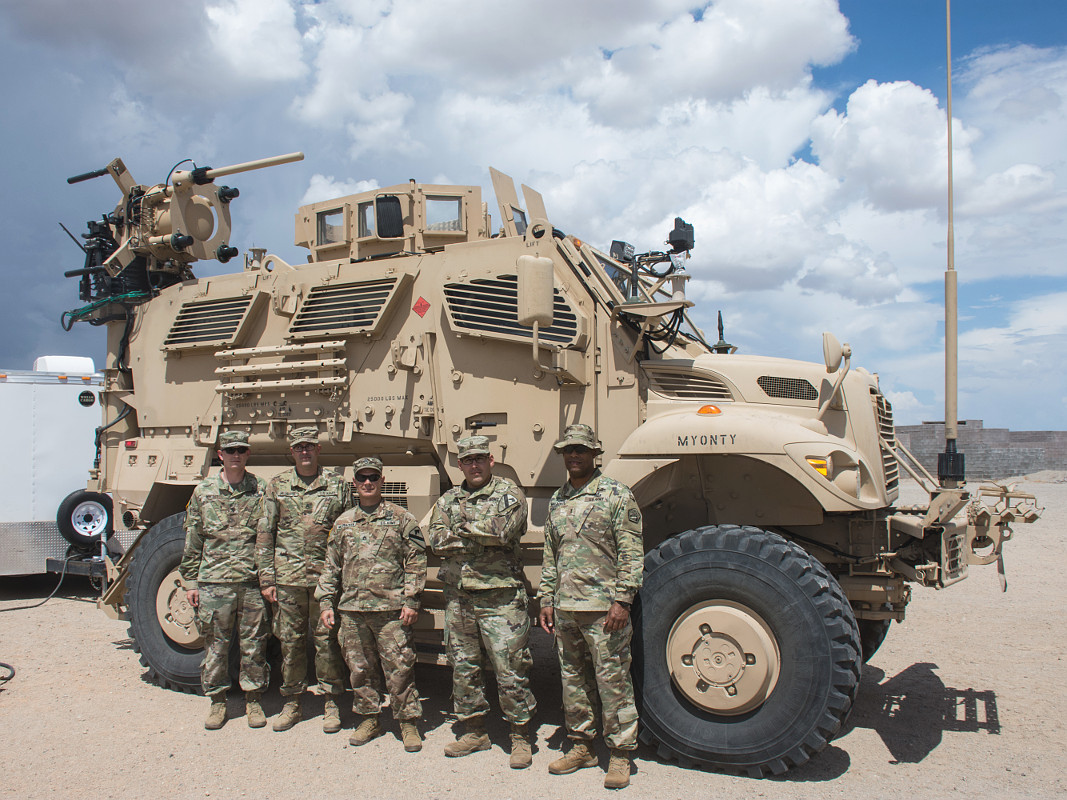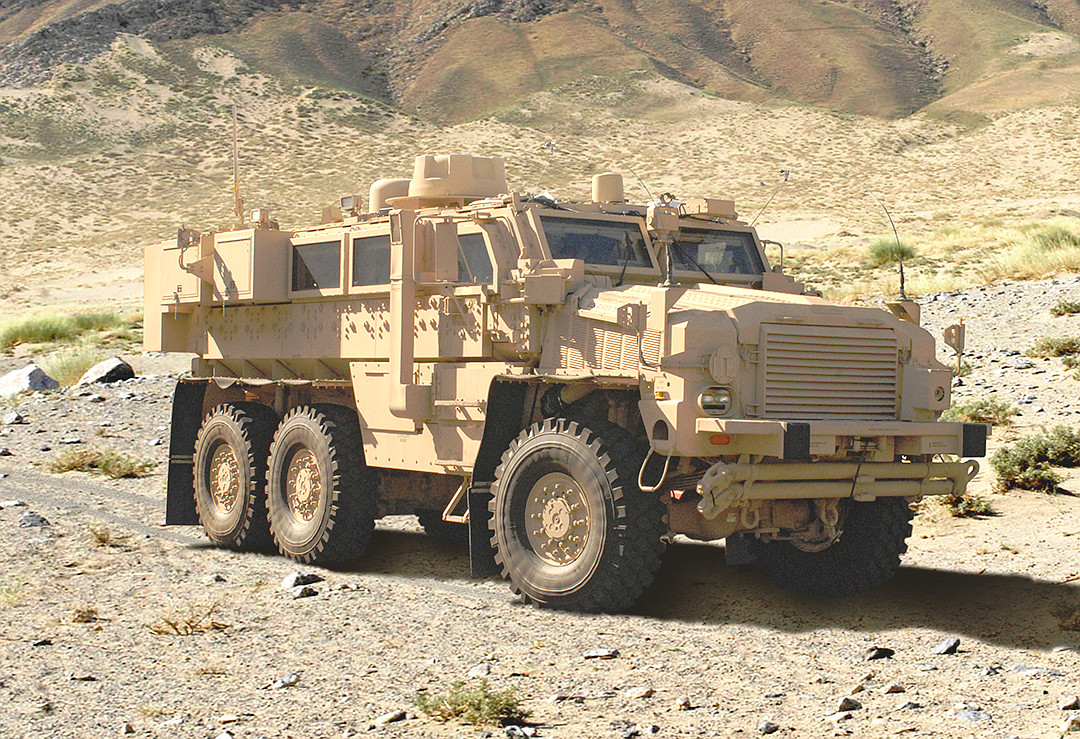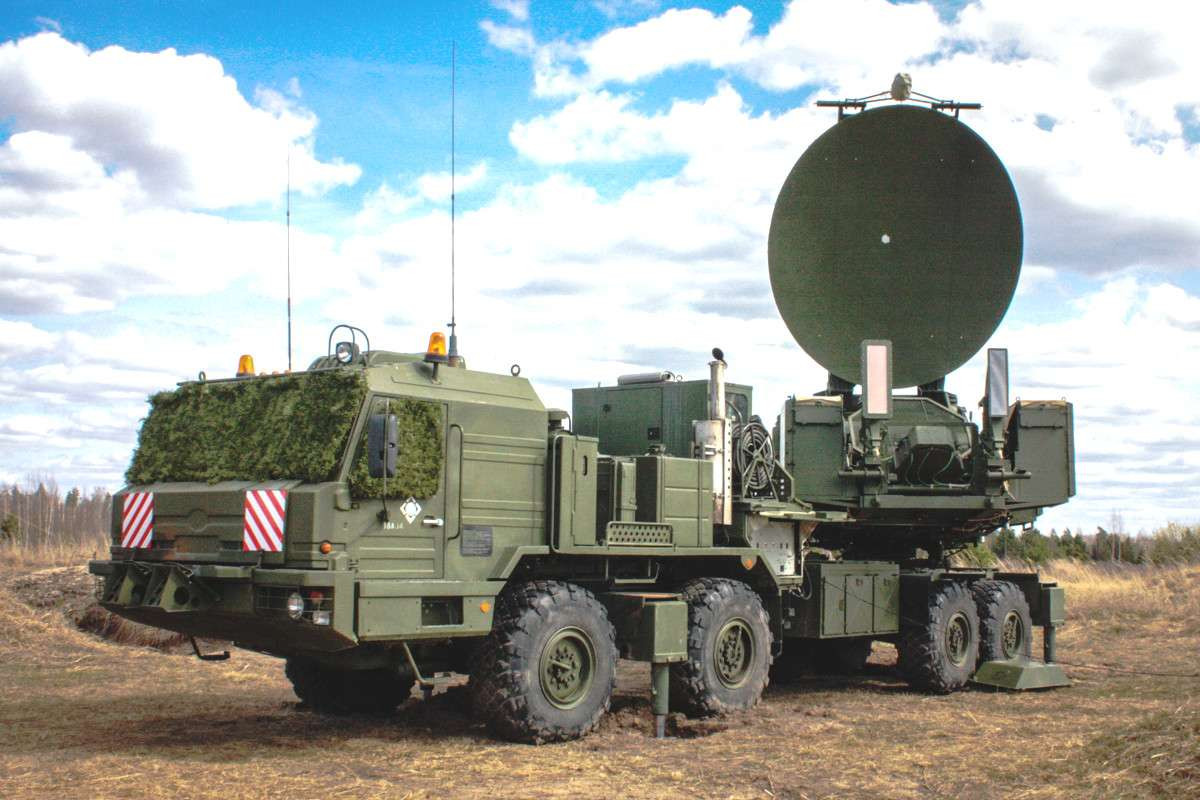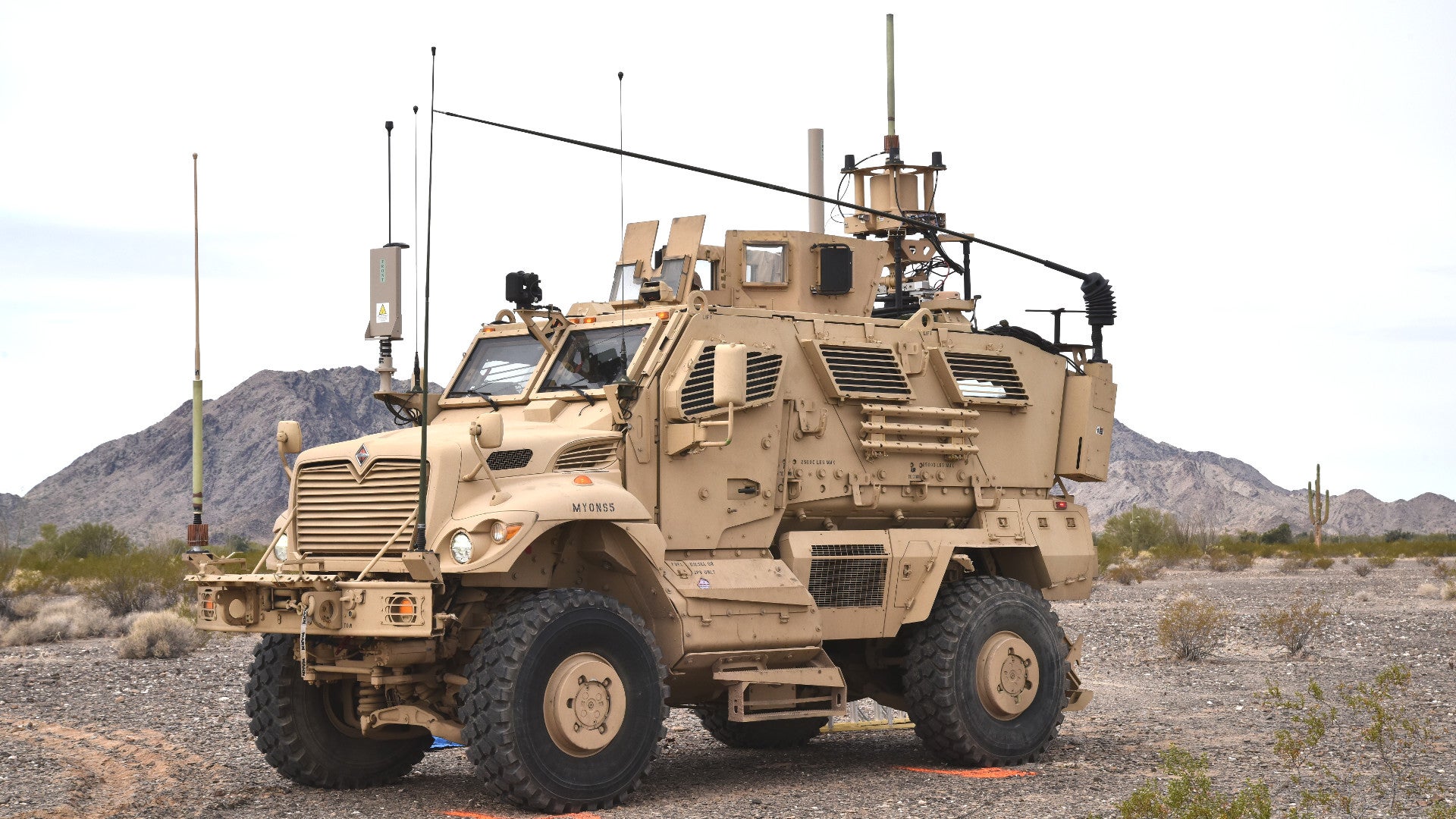Elements of the U.S. Army’s 1st Cavalry Division have begun testing a new armored vehicle that has the ability to jam enemy communications systems and other emitters. With potential opponents, especially Russia, investing heavily in similar systems, the service is looking to reinvigorate its own electronic warfare capabilities, which largely eroded after the end of the Cold War.
Earlier in September 2018, the 1st Cavalry Division’s 3rd Brigade Combat Team sent personnel to the Yuma Proving Ground in Arizona for a two-week course in operating the new system, known as the Electronic Warfare Tactical Vehicle (EWTV). In August 2018, the Army’s Rapid Equipping Force (REF) first announced plans to build the EWTVs on a prototype basis for field testing in the United States, as well as potentially Europe and South Korea.
“We had nothing and now we have something,” U.S. Army Chief Warrant Officer 2 Alexander Torres, an electronic warfare technician in the Brigade, explained in an official interview. “We need to make sure it is effective. If we go out there and just let it sit and collect dust and don’t use it and make sure that it also enables the commander to maneuver his forces and gain the advantage in the electronic spectrum, then really it is wasting a valuable resource.”
The EWTV uses a 4×4 M1235 Mine-Resistant Ambush Protected (MRAP) armored truck to carry the complete electronic warfare package. We don’t know the exact specifications of the system, but SRC, Inc. is the supplier and has based it around a modified version of their AN/VLQ-12 Duke jammer, according to Breaking Defense.

Duke is an outgrowth of a U.S. Army development effort to defeat remote-controlled improvised explosive devices that began in 2005, known as Counter Radio Controlled Improvised Explosive Device Electronic Warfare, or CREW. The initial versions of the AN/VLQ-12 went into Humvees, MRAPs, and other Army armored and unarmored vehicles, to provide short-range jamming to prevent terrorists and insurgents from setting off those bombs with cell phones and other remote triggers.
SRC has since upgraded the range, power, and capabilities of the Duke system, though, and the latest iterations have the ability to scramble a wider array of signals. The company even demonstrated its ability to knock down drones during one of the U.S. military’s Black Dart counter-unmanned aerial vehicle exercises, Breaking Defense noted.

On its website, SRC also now offers what it calls “Integrated Electronic Warfare Systems,” which add “plug-in” modular components to Duke. These additional systems provide direction finding, electronic attack, and signal recording capabilities, to allow personnel to better spot hostile emitters and then decide to either attack them or monitor their activities. It seems very likely that the EWTV carries Duke with one or more of these additional components.
The vehicle also features various antennas on an extendable mast that would help expand the coverage area of the vehicles. Line-of-sight communication systems often have trouble transmitting across complex terrain, such as hills and mountains, and from within constrained urban areas. Jammers, which flood those emitters with electronic “noise,” have the same limitations.
This kind of multi-functional electronic warfare system would give Army units the ability to quickly identify the location of potential hostile units, helping commanders either avoid potential threats or decide how best to attack against them, as well as just gain a better overall picture of how the enemy is positioned around the battlefield. Troops could then decide to jam their transmissions, hampering their opponent’s ability to coordinate their own offensive and defensive operations, warn their comrades of an approaching American force, or request reinforcements or supporting air and artillery strikes.
SRC’s integrated concept also includes networked, data-sharing capabilities, which could allow multiple EWTVs to quickly share information with each other, with other Army units, and with other U.S. military or allied forces. Depending on the range and capabilities of any direction finding or geo-location functionality the new vehicle-mounted system has, it might be able to provide target information to directly cue friendly artillery or airstrikes. The EWTV remains very much an experimental capability, which could evolve more in the near future.

The electronic warfare capability the EWTV offers “has never been used at the brigade-level, so we have to really put it through its paces and see what its capabilities and limitations are,” Torres, the electronic warfare technician, noted. “We have to develop best-practices and TTPs [Tactics, Techniques and Procedures] that will help future units as well as continue the development of a dedicated EW platform.”
This isn’t entirely true, though. When the Cold War ended, the Army had so-called Combat Electronic Warfare and Intelligence (CEWI) elements in each of its divisions that would have provided this type of support to their subordinate brigades during operations. By the early 1990s, there were a number of different truck- and tracked-vehicle mounted jamming systems available to Army units with colorful names such as Trackwolf and Traffic Jam.
As with short-range air defense, after the end of the Cold War, the Army steadily began phasing out these capabilities without any replacement, with the short-sighted belief that the specter of high-end conflicts against nation-state adversaries with large conventional militaries had effectively come to an end. The service decided it could do this by instead relying on the Air Force and the Navy to provide aerial electronic warfare capabilities using jamming aircraft, such as the EA-6B Prowler and EC-130H Compass Call. The Navy has since replaced its Prowlers with the EA-18G Growler, though the U.S. Marine Corps continues to fly the EA-6B, albeit it will be fully retired in a matter of months.
Army units did retain a signals intelligence capability with a secondary electronic support capability to detect, geo-locate, and monitor hostile emissions. However, this system, known as Prophet, has no ability to launch electronic attacks on the enemy by itself.

The problem, of course, is that this arrangement means Army ground units have no dedicated electronic attack option available to them if aircraft from another service are unavailable for any reason. “This is a huge benefit because now we have it on our time instead of relying on our sister services to provide us with jamming capabilities and hoping it is available when we need it,” the 1st Cavalry Division’s 3rd Brigade’s Torres explained.
The aerial assets are already limited in number and could end up spread thin across a wide front during any large-scale conflict. Enemy integrated air defenses or other aerial threats, or just bad weather, might hamper their operations, as well.
In contrast, Russia, and to a lesser extent China, has been pouring resources into the development of ground-based electronic warfare systems of varying sizes and capabilities, many of which are mobile and some of which can jam radios and radars at relatively long ranges. The Russians have reportedly been employing some of these systems against U.S. and U.S.-backed forces in Syria.

So, in addition to developing systems such as the EWTV, the Army is planning to reestablish CEWI-type units – as part of a larger operating concept it has now dubbed Cyber and Electromagnetic Activities (CEMA) – within its combat brigades, which could help get it back on par with potential high-end opponents. There will eventually be electronic warfare companies in each one of its military intelligence brigades, which are dotted around the world to provide support to ongoing and future operations, as well. Depending on how successful the EWTV experiment is and how the vehicle evolves, it might become an attractive option for the Marine Corps, which is also looking to expand its electronic warfare capabilities.
Whatever happens, the Army’s new electronic warfare truck is a sign that the service is taking electronic warfare seriously again and is definitely an important stepping stone to revitalizing this critical capability.
Contact the author: jtrevithickpr@gmail.com
